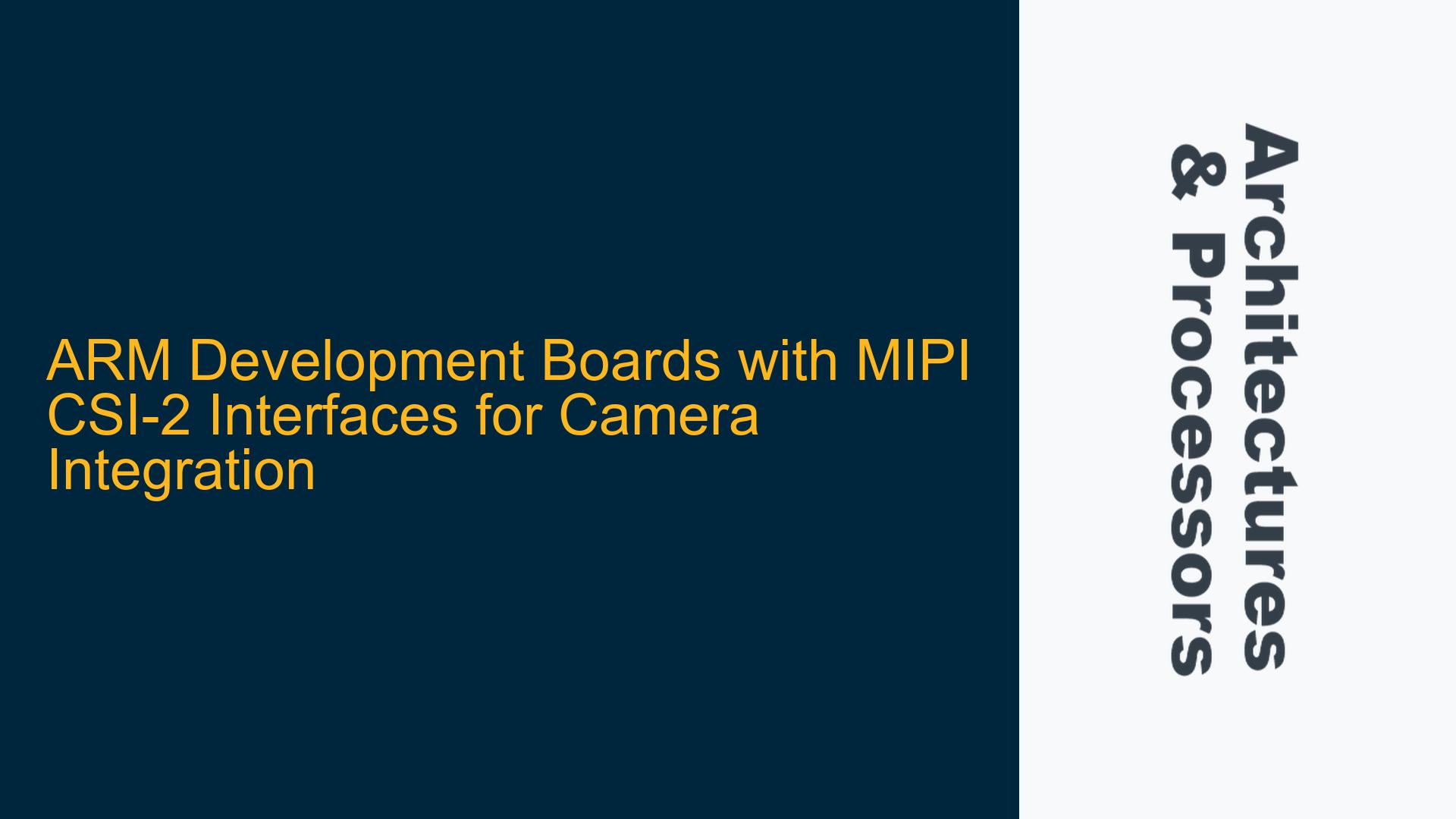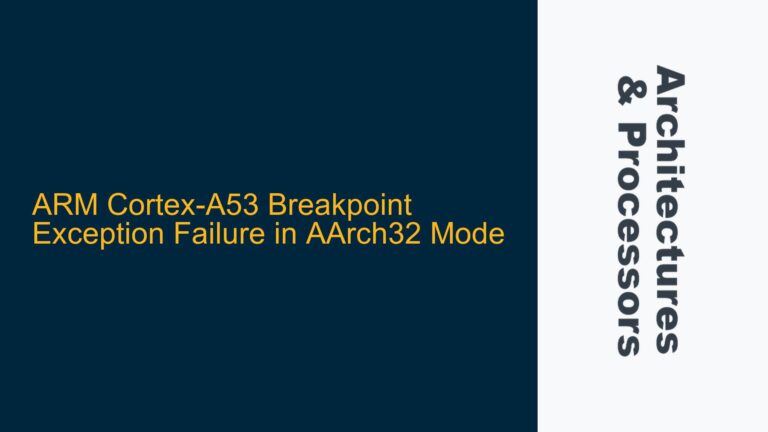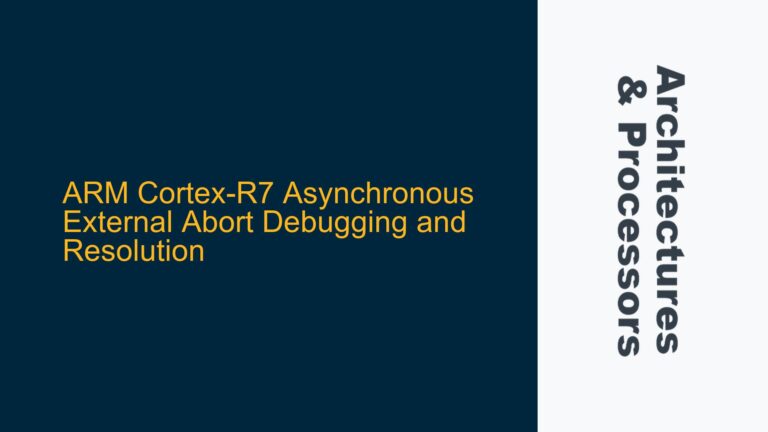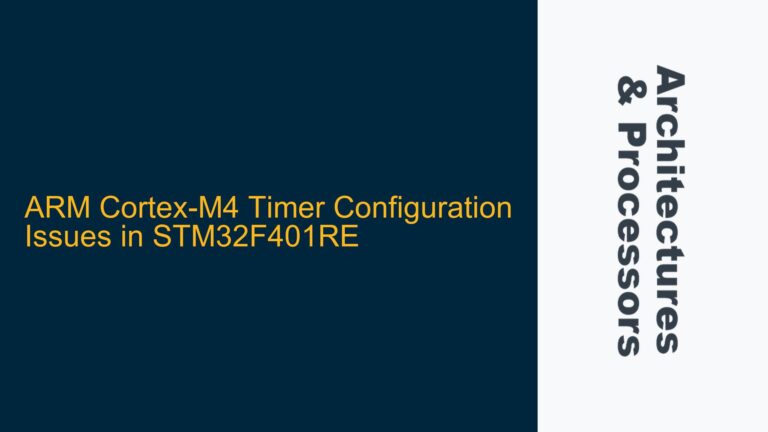ARM Development Boards with Dual MIPI CSI-2 Interfaces
When working on embedded systems projects that involve camera integration, particularly in applications like in-vehicle camera systems, the choice of the right development board is crucial. MIPI CSI-2 (Camera Serial Interface 2) is a widely adopted standard for connecting cameras to processors, especially in mobile and automotive applications. However, finding ARM-based development boards with multiple MIPI CSI-2 interfaces can be challenging, especially for those new to ARM architectures.
The MIPI CSI-2 interface is designed to handle high-speed data transfer between image sensors and processors, making it ideal for applications requiring high-resolution video or multiple camera inputs. The interface supports multiple data lanes, allowing for scalable bandwidth depending on the camera’s requirements. For projects that require dual camera inputs, such as stereo vision systems or multi-camera setups for advanced driver-assistance systems (ADAS), having a development board with dual MIPI CSI-2 interfaces is essential.
One of the primary challenges is that many ARM development boards are designed with a single MIPI CSI-2 interface, which limits their applicability in multi-camera setups. Boards like the MIMXRT1050-EVK, which you mentioned, are equipped with a single CSI-2 port, making them unsuitable for projects requiring dual camera inputs. This limitation often forces developers to either use external multiplexers or opt for more specialized boards that support multiple CSI-2 interfaces.
Challenges in Finding ARM Boards with Dual MIPI CSI-2 Ports
The scarcity of ARM development boards with dual MIPI CSI-2 interfaces can be attributed to several factors. First, the MIPI CSI-2 standard is primarily targeted at mobile and automotive applications, where space and power constraints often dictate the use of a single camera input. As a result, many ARM processors, especially those designed for general-purpose applications, do not include multiple CSI-2 interfaces in their reference designs.
Second, the integration of multiple MIPI CSI-2 interfaces requires additional hardware resources, such as more complex routing on the PCB and additional pins on the processor. This increases the cost and complexity of the development board, making it less attractive for manufacturers targeting a broad market. Furthermore, the demand for dual MIPI CSI-2 interfaces is relatively niche, which further reduces the incentive for manufacturers to produce such boards.
Another challenge is the lack of standardization in the ARM ecosystem regarding MIPI CSI-2 support. While the MIPI Alliance provides detailed specifications for the CSI-2 interface, the implementation can vary significantly between different ARM processors and development boards. This variability can make it difficult to find a board that meets the specific requirements of your project, especially if you need dual camera inputs.
Selecting and Configuring ARM Boards for Dual MIPI CSI-2 Camera Integration
When selecting an ARM development board for a project requiring dual MIPI CSI-2 camera inputs, there are several factors to consider. First, you need to ensure that the processor on the board supports multiple CSI-2 interfaces. This information can usually be found in the processor’s datasheet or reference manual. Look for processors that are specifically designed for multimedia applications, as these are more likely to include multiple CSI-2 interfaces.
Once you have identified a suitable processor, the next step is to find a development board that implements these interfaces. Some manufacturers offer specialized boards for multimedia applications, which may include dual MIPI CSI-2 ports. For example, the NVIDIA Jetson series, which is based on ARM architecture, offers boards with multiple CSI-2 interfaces, making them suitable for multi-camera setups. However, these boards are often more expensive and may not be ideal for all projects.
If you cannot find a development board with dual MIPI CSI-2 interfaces, you may need to consider using an external multiplexer or bridge chip to combine the outputs of two cameras into a single CSI-2 interface. While this approach can work, it adds complexity to the design and may introduce latency or other performance issues. Additionally, you will need to ensure that the processor’s CSI-2 interface can handle the combined data rate of both cameras.
Once you have selected a board, the next step is to configure the MIPI CSI-2 interfaces. This typically involves setting up the camera modules, configuring the CSI-2 interface in the processor, and ensuring that the data is correctly routed to the appropriate memory buffers. The exact steps will depend on the specific processor and development board you are using, so it is important to consult the relevant documentation.
In conclusion, while finding ARM development boards with dual MIPI CSI-2 interfaces can be challenging, it is not impossible. By carefully selecting the right processor and development board, and considering alternative solutions such as external multiplexers, you can successfully integrate dual cameras into your project. The key is to thoroughly research the available options and ensure that the chosen solution meets the specific requirements of your application.






